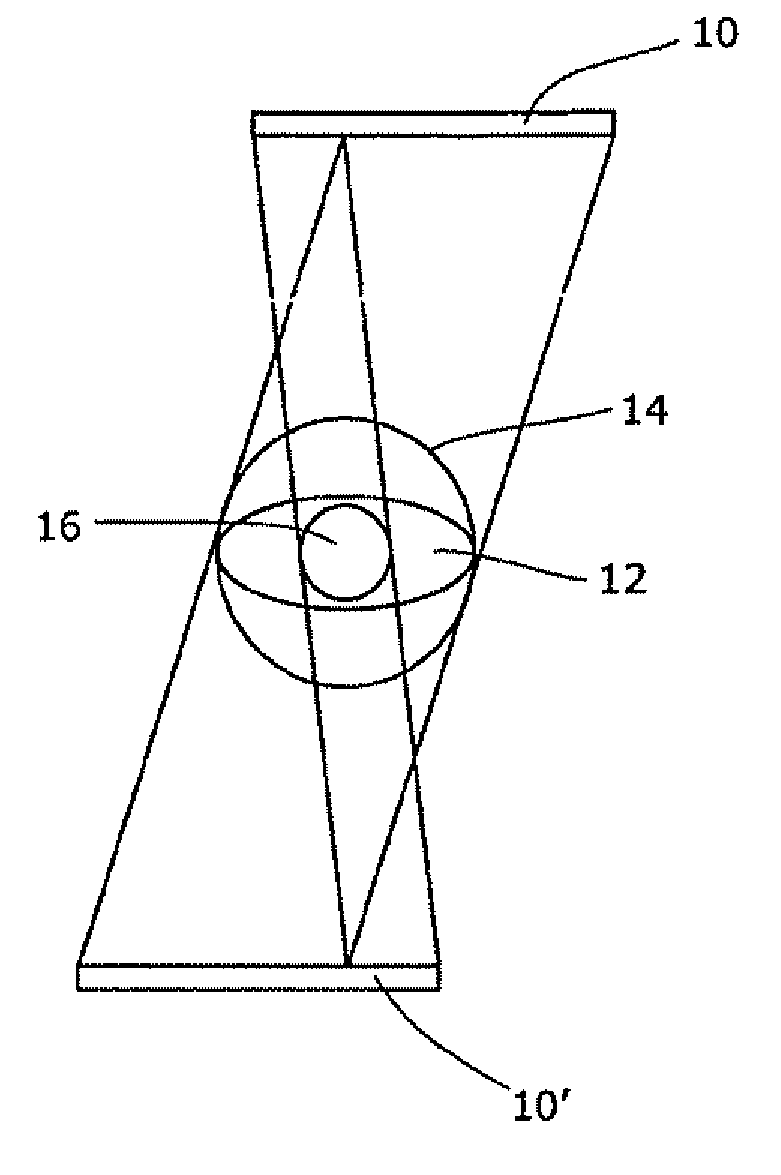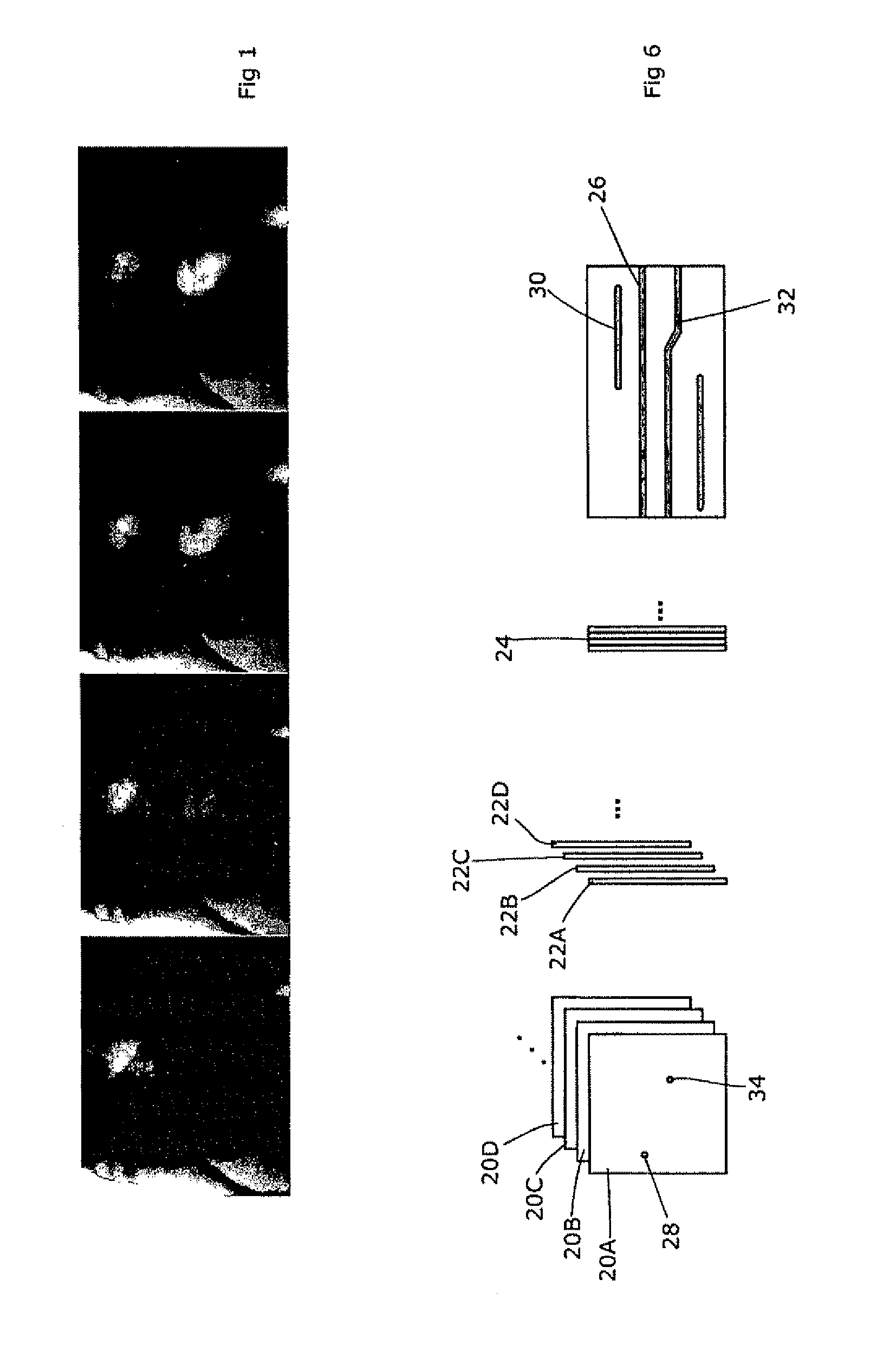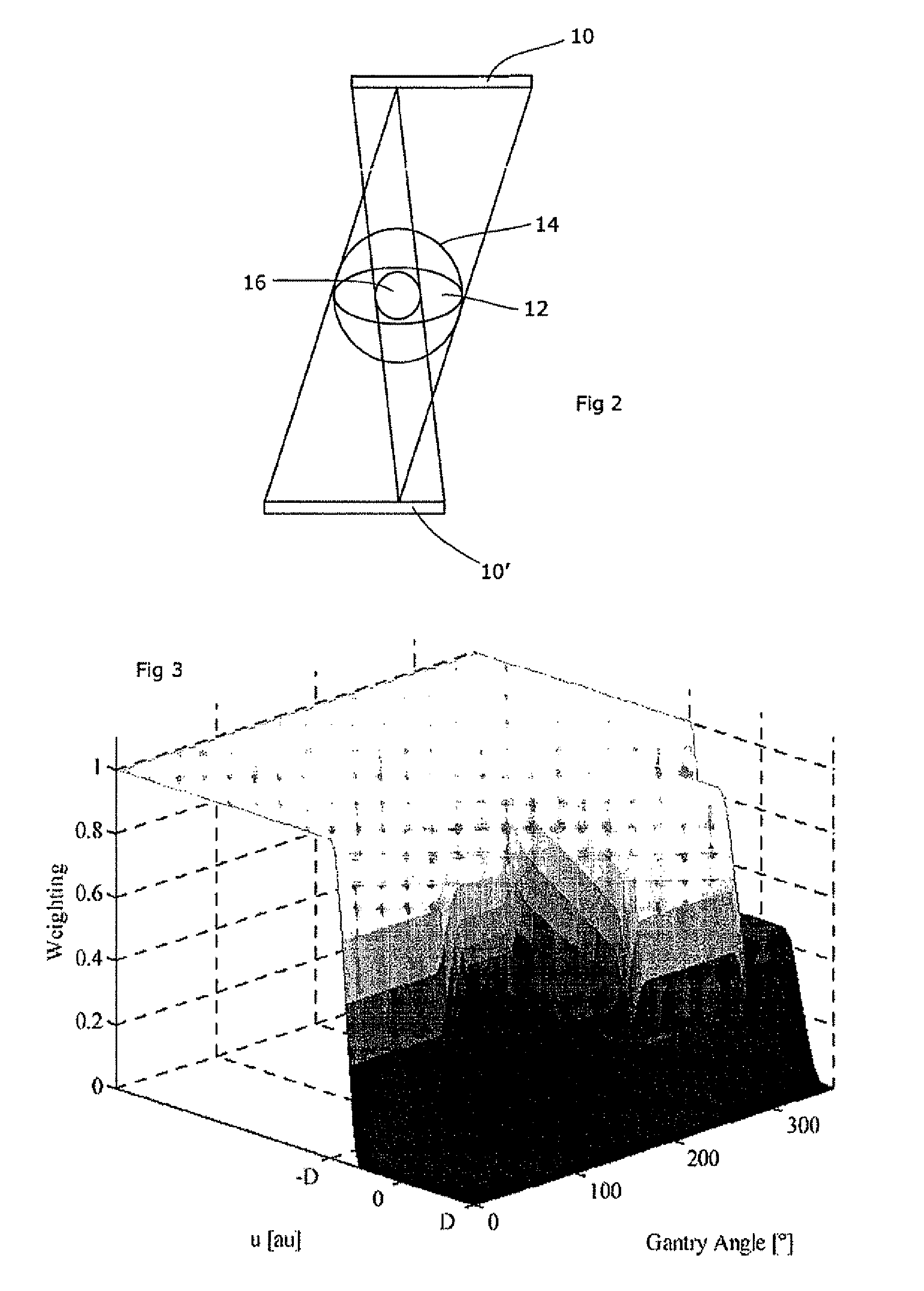Motion artefact reduction in CT scanning
a technology of motion artefacts and ct scanning, applied in the field of reducing motion artefacts in ct scanning, can solve the problems of accuracy of automatic registration techniques, affecting the visual inspection, and affecting the success rate of automatic registration techniques
- Summary
- Abstract
- Description
- Claims
- Application Information
AI Technical Summary
Benefits of technology
Problems solved by technology
Method used
Image
Examples
Embodiment Construction
[0024]The uncertainty in the position of mobile organs over the course of a treatment limits the accuracy of radiotherapy (RT). Cone beam CT (CBCT) integrated with a linear accelerator allows contact-less and fast localization of soft-tissue structures and therefore provides a powerful tool for image guided RT techniques (IGRT). The mathematical model of computer tomography does however rely on an inherent assumption that the scanned object is static. When the object changes during scanning, however, this intra-scanning motion induces artefacts in the resulting reconstruction. Due to the slow rotation speed of CBCT apparatus integrated with the linear accelerators used in RT (of the order of 30 s to 4 minutes per rotation), it is mainly blurring and streak artefacts that are induced. These artefacts hamper IGRT applications, as they reduce the success rate and accuracy of automatic registration techniques.
[0025]For periodic motion such as breathing, motion artefacts can be managed b...
PUM
 Login to View More
Login to View More Abstract
Description
Claims
Application Information
 Login to View More
Login to View More - R&D
- Intellectual Property
- Life Sciences
- Materials
- Tech Scout
- Unparalleled Data Quality
- Higher Quality Content
- 60% Fewer Hallucinations
Browse by: Latest US Patents, China's latest patents, Technical Efficacy Thesaurus, Application Domain, Technology Topic, Popular Technical Reports.
© 2025 PatSnap. All rights reserved.Legal|Privacy policy|Modern Slavery Act Transparency Statement|Sitemap|About US| Contact US: help@patsnap.com



